Trending
Opinion: How will Project 2025 impact game developers?
The Heritage Foundation's manifesto for the possible next administration could do great harm to many, including large portions of the game development community.

Featured Blog | This community-written post highlights the best of what the game industry has to offer. Read more like it on the Game Developer Blogs or learn how to Submit Your Own Blog Post
My recollection of the project, which took us over two years to make, and was also our first Steam game.

First off, an introduction. For anyone that doesn't know: I'm the programmer, designer and artist on this project. The game was a labor love from a core team of four guys, and it was released on December 29, 2016.
Disclaimer: These are my personal recollections of the process, not the collective experience of the team. First, I'm going to go through a little bit of the earlier history, and then move into the actual development process of the game. I love all the guys who worked on Kalaban, and without these fellow developers, none of this would've happened.
And what's most remarkable: some of the people working on the game still haven't seen each other face-to-face. The project was created with the magic of Internet, utilizing Skype and a number of digital storage services such as Google Drive and Dropbox.
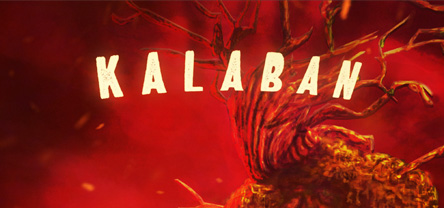
Rayhouse Productions was founded in November 2013. We were a bunch of indie filmmakers, who had previously worked together on numerous short film projects. In the beginning, we had this idea of doing commercials, content design and graphic design as client work. We were open for new ventures, with the possibilities of this newly formed company.
This was me, in April 2014, thinking that I'm going to change the world with my upcoming indie game. My first indie game in seven years. As a teenager we had done 3D game projects, but none of them ever got finished. And we made several smaller 2D games before that. I have been doing indie games since I was 10. It's always been my passion, ever since I saw the first computer games as a kid.
Not going into too much detail with my personal history, but I was not in a good place mentally during the spring of 2014. I had grown totally frustrated with the world of freelance work, and I was ready to shift gears from moving pictures into the interactive medium of games. It seemed like a real golden land of opportunities at that time.

I had moved to Tampere at the end of 2013, after graduating from my previous school at Pori. I had done a Bachelor's degree on audiovisual studies, and I was basically unemployed at the time, even though we had formed Rayhouse. I was still dreaming about my film projects, and I even out a draft of my feature-length script Warplay into the Finnish Film Foundation. The FFF is the biggest funder of scripts in Finland, unfortunately I got a negative response to my application.
But they good folk at Film Foundation pointed me to a screenwriting program here in Tampere, to which I applied, and got in. It was a Master's Degree in international screenwriting, and just what I was looking for. At the same time, my whole mental picture and mindset was changing. I had previously been an old-school 2D graphics guy, and had just started learning Autodesk 3ds Max. Getting into 3D graphics proved to be a great decision for me. Without that acquired knowledge, the pre-rendered characters and backgrounds in Kalaban would not have been possible, nor any of the stuff done since.

Pasila, Helsinki in 2013.
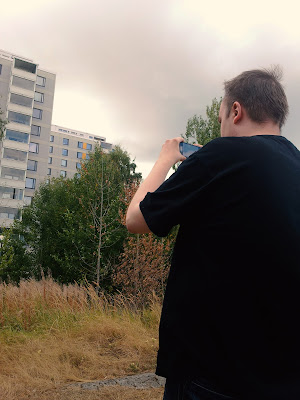
Me and Juha Peltomäki, one of the guys at Rayhouse Productions, attended the Assembly Summer computer festival. When there was no special activity at the festival site, we took a walk to the city and park nearby, and explored the locations.
In April 2014, I started my first independent game project, after taking a long break from the indie scene. I had previously worked at a bigger game company in Pori, and I got laid off from there in early 2013. That was roughly at the same time as I graduated from Bachelor's degree studies. So, I kind of had this year of searching myself. I applied for numerous jobs in Pori, ranging from graphic design to audiovisual production, but I got rejected from all of them.
After spending the whole spring and summer unemployed, at this crummy apartment in Pori, I realized things had to change. I had started developing this board game called Neurotron with my buddy back from school, Vesa-Pekka Koivisto, who has also worked at that game company in Pori. We were trying to raise money through a crowdfunding campaign for the board game during the fall of 2013. When that fell through, I kinda felt that it was time for me to search other job possibilities at Tampere.
This was me in March 2015, during my Master's Degree studies:

That's me on the sunny and windy streets of Manchester. We made this trip to Britain during the studies, where we discussed our feature-length drafts and pitched a new concept for a TV series to our teacher.
My studies at Tampere taught me a lot during the course of one year. I had always been interested in screenwriting for games and movies, but had never done them professionally. During my time at Pori I had written a few feature-length scripts, but they were all godawful. I was really eager to learn more, and decided to put my ego aside while learning to get better at my craft.
Those Master's Degree studies also taught me a valuable question, which you must be able to answer about your script: " What's the story? "

The view outside the window, taken from the balcony of our flat during the trip.

At the same time, our development team had begun the actual work with Kalaban. The concept was conceived during a car trip with me and Tuukka Kuusisto, our creative director, in November 2014. Me and a couple of buddies at Rayhouse were visiting Tuukka, and we got talking about game design.
I had already done a few early games in 2014, and Tuukka had this idea of a story-oriented survival game, kinda like a mix of Don't Starve, Notrium and Driftmoon. The idea sounded really interesting to me, and first we were going to base it on a topdown shooter prototype I had done called Skipocalypse. That game had anthropomorphic animals as main characters, and it was more tongue-in-cheek than what Kalaban became.
Through a couple of twists and turns we started working on the top-down action-adventure game, that we all know today. We recruited Eetu Suoranta as our musician and sound effects guy, who was already a familiar collaborator to our short film projects. We also got Vesa-Pekka Koivisto, the friend who had helped me out with Neurotron board game, to do the character design and player animations. Both of them were my school buddies, and both of them had worked at the same bigger game company in Pori.
In January 2015, the vision for Kalaban had formed into: "A horror-themed version of DreamWeb, set in Finland during the 1990s, with inspiration from Sanitarium, with a little bit of Hotline Miami style action thrown into the mix. And all of this done from a slanted top-down angle, to best simulate a 3D game world".

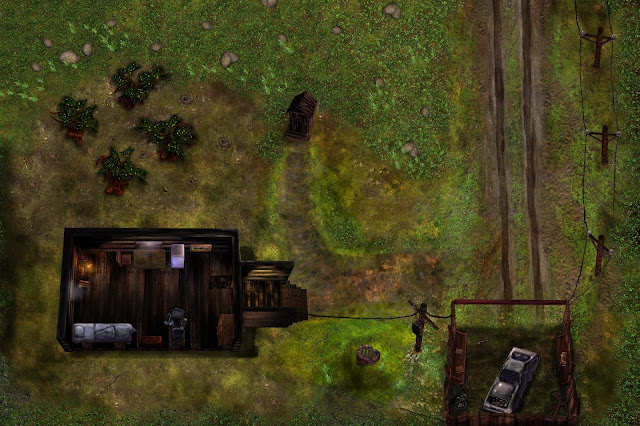
The picture above is the very first sketch for a level in Kalaban.
The one below that is a later rework of the same scene, when we had set upon this more realistic design for the game world. Kalaban was never meant to be photorealistic, although it's set in real world inspired locations. Through the development we rode this line between comic book horror style, and a more believable design.
The game was developed completely with Clickteam's Fusion 2.5 engine and tools. To those who aren't familiar with that software, maybe you've heard of their earlier efforts: Klik&Play and The Games Factory. Yes, Kalaban is actually a "Klik&Play game". This is due to the fact that I'm not actually a professional programmer. I've always been more of a graphics and design type of guy, who just had to get into coding as a necessity. Since the release of Kalaban I have been using Unity constantly, but at the time I had to make some consents. It was either going to be art and design, or programming and learning a new engine.
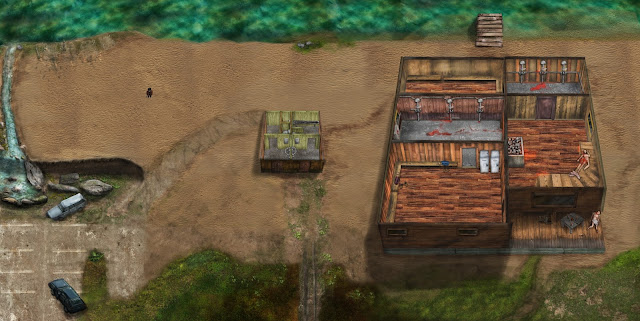
Clickteam's software can be described kindly as a "visual programming tool". A lot of things have to be done differently, than on regular programming tools, but most of the same rules apply. You have to learn a little bit of math, and know something about algebra. And always, plan ahead and think about what you're doing. The other part of Clickteam's software is like working with obsolete game making tools, such as Ken Silverman's iconic Build engine.
I grew up loving Build as a kid, and I did a huge amount of maps with it. Me and my friends basically did mods to Duke Nukem 3D, where we would mess around with the configures and setting of the game, resulting in different effects inside the game. To me, working with these kind of rough and outdated tools has always been an exciting challenge. It's great to see what you can really do with them, and take the software to its absolute limits. A lot of Kalaban's development was like that.
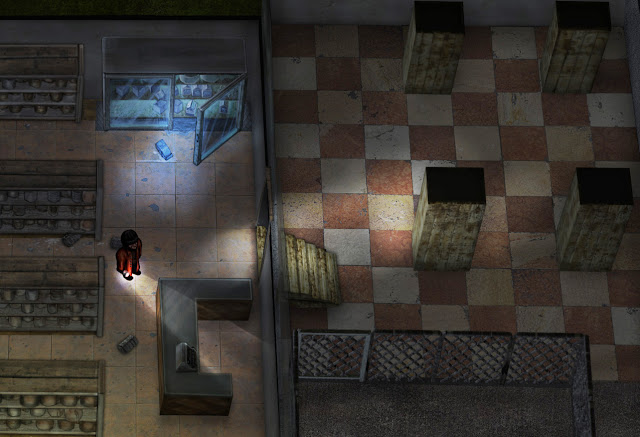
By the way, what happened to that first indie game? If Kalaban was started in January 2015, then what was the first game I worked on during the spring of 2014?
Actually, it was a digital version of the Neurotron board game, visioned as a cheeky retro role-playing game. It was totally my personal prep school for getting back into game development.
 Neurotron, which was our entry to Assembly Summer festival's gamedev competition.
Neurotron, which was our entry to Assembly Summer festival's gamedev competition.
As I mentioned in the beginning, we had already developed indie games as teenagers. Most of those projects were 3D first person games, which simply were impossible to pull off. There's too much story related to those projects for me to cover in a single post, so I'll have to revisit those some other day. But those earlier projects had provided me with enough insight, that I knew I had to do things differently this time around.
I figured that, first of all: doing 3D games as a single developer would be impossible. Especially combined to the type of games, that I would be interested in creating. And that was really important for me, that I didn't just go on and create some Angry Birds or Bejeweled clone. I wanted to work on original designs, which were first and foremost story games.

My battle station when I started developing Neurotron.

This was our computer class at the school where I studied screenwriting.
Stylistically and design-wise Neurotron was a total mess. No getting around that fact. It was a turn-based RPG, from a guy who had not coded any games during the last seven years, let alone any turn-based games.
During the summer of 2014 I was looking for programmers to take on the task of coding the project with me. I would've liked to handle the art and design, and then have someone actually talented do the programming for the game.
No one wanted to work with our games. This was true even all through Kalaban's development. I tried multiple times to reach out to fellow programmers and friends who knew how to code, and none of them were willing to take the task. Just promising a revenue split from a game that "might get finished some day" was not enough to motivate those guys. We tried, and we failed, but luckily we haid our faithful core team of four heroes.

Real design talent doesn't come from books, it comes from actually making the games.

A view from Finlayson, the place where our screenwriting school was located.
So, when we finally were making progress on Kalaban in the spring of 2015, it became really clear to us that we had to do this all ourselves. When I learned how to properly develop games with the Clickteam software, it was done more as a necessity, not like we found that software to be most suited for our needs.
We wanted to make games, we wanted to get them finished, and we wanted to be independent. So we just had to make due with the tools that we had. Pretty much everything I learned from the Clickteam software was self-taught. The software has got a pretty good community, but the official guides to it are really lackluster.

A lot of people have complimented the art and design in Kalaban, and to be perfectly honest, those were the things we really focused on. Design here refers to both the story and to the way the gameplay works. We knew from the start, that Kalaban was never going to be this perfect Blizzard Entertainment type of game, which would work flawlessly and without bugs. Kalaban was as much our own personal odyssey into game making, as it was a journey to figure out the limits of the software.
The game's grungy writing and art style eventually merged with the "grindhouse-feel" of the game and the way it plays. The goal for us became to emulate the feeling of those fun low-budget horror flicks: the atmosphere and concept had to be great, although it would not be Hollywood technically.

At the end of May 2015, I left my screenwriting studies behind. Some would call that a dropout. But it was really due to some poor planning by the guys who were offering that particular study program, and the drama behind the scenes with those faculties.
I was not bitter about the situation, and to me it was more of a shame. I really liked the teachers, who held the actual courses, and our screenwriting group was really great. But, as it often turns out, not everything in life goes according to plan.
January 2015. Our crazy, but totally awesome class of screenwriters. When a part of the group had their final course at the school, we took this group photo in the elevator. That's me on the left.
All of this then allowed me to work full-time on Kalaban, and really put all my creative effort into it. Going into June back in 2015, I was completely broke, had spent all my savings to those screenwriting studies, didn't even get a finished degree out of it, and was practically unemployed.
So, that left me with very little options in terms of my future. Either I would work on this game, and maybe, eventually, finish it, or then I could... Well, there were no alternatives, really! The game became the one thing keeping me sane, although finishing it would require a lot of pain and suffering.

In October 2015, I scrapped all the previous code of this project. I looked at the game, saw that it was going nowhere, and decided that it would be better to start over. And from the rubble, I could slowly start to work towards a really enjoyable experience. Vesa-Pekka and Eetu had totally lost their motivation at that point, and were no longer actively working on any new stuff for the game.
I can't blame them, really. Before the rehaul, the game ran like shit, looked like garbage, and the gameplay was just utter trash. The fun definitely was not there, and I realized that drastic measures were needed to save the project. I began rebuilding the gameplay, slowly, first starting with the melee combat system and the enemy AI.
I wanted the simple task of moving around and exploring the world, occasionally fighting a few mutants, to feel good. This core gameplay loop had to work, in order to get all the other stuff working. When you've played the game long enough, that combat dance becomes a second nature, and as you're navigating through the level, searching for that next story bit to discover, you don't even pay attention to it. That is until you run into the cultists...

Build of the past: This was Kalaban in July 2015, before the rehaul.
When we got the core gameplay loop working, we could get the other stuff in the game too. And that took us all of 2016, really. I started working full-time on Kalaban again in January 2016, after finishing up with a couple of my side ventures.
At that point I had the very basic system for the game ready, but the inventory screen had to be scrapped, the quickbar system had to be reworked, and pretty much everything else was still missing from the UI. The player couldn't even die, because we had no death animation for the him. Eetu and Vesku started collaborating with the game again, after regaining some trust with the new alpha version that was cooking up.
Soon, you could shuffle through your inventory, there was a second enemy type in the game: the Spitter, and player had all his basic movement and attack animations with the axe. And he could now die, with the corny death screen in place.

The newly-created game world felt barren and empty, sure, but it was a good start. Much of the 2016 was filled with grunt work: scenes needed to be created, dialogue needed to be written, animations needed to be done and music and sound effects needed to be added. We got back into full gear, now that all the initial birthing pains were behind us.
As we looked at the design, and how much still needed to be done, we wisely decided to cut back on the overall length and size of the game. The original vision would've been HUGE compared to the game we shipped, and would've either required five more guys to make, or two more years from us.
We learned a lot of valuable lessons from this process of cutting back on the design. Kalaban doesn't have a lot of enemies or weapons, but each of them serve a very specific purpose. There is no useless trash or filler in the inventory items: all of them either serve the story, painting a bigger picture of the world, or solve some problem within it.

We didn't want the players to feel lost, but we also didn't want to hold their hands with quest arrows and such. If we could have the players figuring out stuff by themselves, with just a little nudges and hints, we would be happy.
We had played so many obscure indie games, where you tumble around in the dark, trying to figure out what the hell the developers have tried to do. And also many older big money releases, which throw you right into the action, expecting you to be some kind of master of this genre. We wanted people to be able to enjoy the story, and not let any other mechanic, like the food meter, get in the way of that.

This picture is not Photoshopped. That's an actual bat, seen in broad daylight. During development, the only way to stay sane was to take long walks and exercise regularly.

The fun park of Särkänniemi, during the summer of 2014, on one of my late night walks.
The food mechanic did earn a lot of feedback from the players, but not due to the fact that it was so punishing, but due to the fact that we didn't explain it well enough in the game. The food in this game is actually your regeneration mechanic, and the higher your food value, the faster you regenerate.
If you're heading into combat you (surprisingly enough) want have your stomach full, so you can gain a faster regeneration.

The story, the design and art really became the things that we put our money into. Those, and the software used to make the game.
We planned on doing an Indiegogo campaign during the spring of 2015, but that would've required an impressive (or at least working) alpha demo. We didn't have pretty much any of the necessary player animations, or the gameplay in steady condition. That demo would've not been able to convince players to put their money into the project.
So, we went on with this kind of plan, that instead of putting money into marketing and hype, we would learn how to make games first. And if the game would be any good, we would hype it along the way, maybe growing a small cult following during the development.
The initial reaction to Kalaban has been really good, and to be honest, really surprising. While in development, we were ashamed of our game, knowing that it contained a lot of bugs. And also knowing, that a real programmer could've made wonders to the project. But nevertheless, we're really glad that people have recognized the effort that we've put into it.

So, in conclusion: the thing that went right for us was that we didn't really put a lot of money into the game, but instead made it as good as we could. Why is this a good thing? This way there isn't a huge pressure for us to sell a 100K+ units within the first couple of months, so that our company doesn't go under. Now, instead, we can let the players come to the game, and discover its strange and beautiful world.
I've been feeling a bit better myself, now that the game is out. I didn't want to work on it endlessly, and frankly, I really couldn't go on with the way the development was going before release. We just had to get the game out to players. To the world.
We're constantly adding new updates and bug fixes to the game. So the full story of Kalaban is not told yet...

If you want to test the other games that we've done since 2014, most of which were not mentioned here, head over to our page at ModDB:
We just released a new 1.0.6 version of the game, check it out at our Steam page. Thanks for tuning in!
Kalaban
by Rayhouse Productions
Publisher: Rayhouse Productions
Team Size: 1 full-time developer, with core team of 4 developers and 9 part-time testers.
Length of Development: 2 years
Release Date: December 29, 2016
Platform: Windows
Hardware Used: Programming and art workstation: Intel Core 2 Quad Processor Q8400 @ 2.66 GHz, running Windows 7 Professional 64-bit with 8192MB RAM and NVIDIA GeForce GTX 550 Ti.
Software Used: Clickteam Fusion 2.5, Photoshop, MakeHuman, 3D Studio Max, Audacity, Reason
PS: If you want to hear a longer story about the creation of Kalaban, get some of the folks from GDC to hit us with a message. I would be happy to reprise this as a live talk, especially with our creative director, Tuukka.
Read more about:
Featured BlogsYou May Also Like